
Contact

Home
Loch Ness Monster part 2
LOCH NESS "MONSTER."
Townsville Daily Bulletin (Qld.)
Date: December 5, 1933
Page Number: 7
Lively controversy is still in progress regarding the "monster" which is alleged to have been seen in Loch Ness. Even those like myself who are disposed to be sceptical, are bound to admit that the variety of testimony is impressive. The fact that similar stories have been current at intervals during the last half century — they date back even to the days of St. Columba — will be regarded as confirmation or contradiction according to the stand point of the hearer. It has been urged that the Fishery Board should set up an inquiry, but that body pleads that it is not its affair. The theory that a pleslosaurus has survived from prehistoric times is scouted by the experts in these matters, and the other suggestion that the object which has been seen may be a tree-trunk or a mass of floating peat does not fit the evidence of observers who declare that the "monster" has powers of locomotion. Only this week the engineer of a tug which was towing a barge up the Loch claims to have seen the strange visitant following in the wake of his craft. The Secretary of the Scottish Travel Association has hastened to give the public an assurance— surely gratuitous— that the "monster" has not been invented by his organisation for publicity purposes. Visitors are more likely to be deterred than attracted by the presence of monsters.

1933
"Visitors are more likely to be deterred than attracted by the presence of monsters."
Was he kidding? People LOVE monsters and there was already instances of such mysteries drawing crowds of sightseers. Even today, the Loch Ness is synonymous with its "monster" which still brings throngs of tourists to the region.
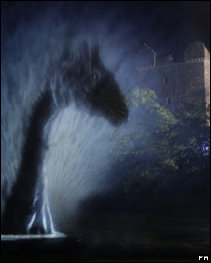
Loch Ness Monster 'family-friendly' to boost tourism
27.11.2009
LOCH NESS MARINE MONSTER
OFFICIALLY PROTECTED
Barrier Miner (Broken Hill, NSW)
Date: December 9, 1933
Page Number: 5
(Special to "The Miner.")
LONDON, December 7.
The chief constable of Inverness has stationed five constables at different parts of Loch Ness to prevent, anyone shooting or making any other attack on the marine monster which is supposed to be in the lake.
[The Loch Ness monster was first reported last October. It is described as being about 33ft, long, with eyes like motor lamps, and able to swim at a terrific speed.]
LOCH NESS MONSTER
London Paper Publishes Photograph
The Daily News (Perth, WA)
Date: December 7, 1933
Page Number: 7
(Special to 'The Daily News")
LONDON, December 6.
The "Daily Sketch" publishes a snap shot which is described as the Loch Ness monster. There is a blurred impression of an animal body, like that of a whale, with a head like a seal and elongated tail. Scientists say the negative is genuine and has not been tampered with.
Mr. Norman, chief of the Piscatology Department, Natural History Museum, London, says he is not sceptical that some sort of animal exists, though eye sight plays extraordinary tricks and it may be mere wreckage. Many reports have been received of a monster supposed to inhabit Loch Ness, Scotland.
SCOTLAND'S LAKE MONSTER
London "Times'' Features Story
UNKNOWN SPECIES
The Daily News (Perth, WA)
Date: December 9, 1933
Page Number: 1
(Special to "The Daily News")
LONDON, December 8.
The Loch Ness monster continues to be most widely discussed. The London "Times''--probably one of the most conservative and reliable papers in the world--today gives licence to the story of the monster in the lake (which was exclusively reported in Western Australia by the "Daily News" on October8 last). Today the ''Times" prominently displays Commander T. Gould's investigations on the spot, and in a leading article, says :—
"Commander Gould, although he has not seen the monster, is convinced that it is a reality and has come to this astonishing conclusion because 51 independent witnesses have seen at Loch Ness a living creature belonging to no species known to science, though closely resembling the traditional description of a sea serpent."
The "Times" points out that Commander Gould is a distinguished officer particularly employed on Admiralty work requiring minute exactitude, but it doubts whether his suggestion that Parliament should specially protect the monster will be accepted. Earlier Reports (The "Daily Mail,'' the "Scotsman" and other newspapers in October printed double-column accounts of a mysterious monster reputed to dwell in Loch Ness. Scores of watchers declared that they had seen a beast swimming with terrific speed. It had a black back with a pronounced hump, a neck seven feet long, and eyes as big as motor car lamps. Its total length was 30 feet. Apparently it did not desire to molest humanity. It seemed timid. Some people consider it is a prehistoric animal released from subterranean caverns by blasting operations; others say it has strayed into the lake from the North Sea.
Loch Ness has a sinister imputation. It never gives up its dead. Though the greatest sounded depth is 754 feet, parts have never been plumbed. Divers have reported that gloomy caverns stretch into infinity like great cathedrals.
The "Daily Sketch" on December 6 published a snapshot which was descibed as the Loch Ness monster. There was a blurred impression of an animal body, like that of a whale, with a head like a seal and elongated tail. Scientists say the negative is genuine and has not been tampered with.

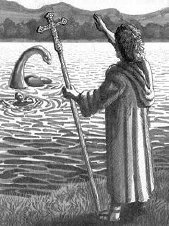


Spurred by the arrival of the Loch Ness Monster in the media news and his previous work on the Sea Serpent, Gould spent some days at Loch Ness travelling around it by motorcycle. He interviewed many witnesses and collated evidence for the creature that resulted in the first major work on the phenomenon, entitled "The Loch Ness Monster and Others". After this, Gould became the de facto spokesman on the subject, being a regular contributor to radio shows and newspaper articles.


When one considers how much of the frame the object occupies, it is remarkable that Mr Gray had no idea what he had photographed and
only thought that it might be worth showing after he had had the picture developed.
[source]
It was this picture, snapped by Hugh Grey on 12 November 1933, that is credited as being the first photographic evidence of the Loch
Ness monster. It appeared on the front cover of the Scottish Daily Record on 8 December that year, under the headline "Monster photograph
of the mysterious Loch Ness object".
"It is the first picture and bears that distinction, but it is also the least easy to interpret.
"It
has been suggested that it is a double negative, perhaps of a Labrador dog with a stick in its mouth, but it could be anything."
[source]
"Loch Ness has a sinister imputation. It never gives up its dead."
This claim is simply false:
"There is a blurred impression of an animal body, like that of a whale, with a head like a seal and elongated tail."
Note how
this description bears little relation to the actual picture. Wishful thinking, blatant sensationalism, or both?


A STRANGE MONSTER.
CREATURE IN SCOTCH LOCH.
Naval Man's Inquiry.
The West Australian (Perth, WA)
Date: December 11, 1933
Page Number: 13
("The times" Special Service.)
LONDON, Dec. 9.
The alleged presence in Loch Ness (Scotland) of a strange monster, continues to be widely discussed. "The Times" arives prominence to the investigations on this spot by Commander R.T. Gould, and in a leading article says that although he has not seen the monster, he is convinced of its reality, and has come to the astonishing conclusion that 51 independent witnesses have seen in Loch Ness a living creature belonging to no species known to science, though closely resembling the traditional description of the sea-serpent.
"The Times" points out that Commander Gould is a distinguished officer who was particularly employed on Admiralty work requiring minute exactitude, but doubts whether his suggestion that Parliament should specially protect the monster should be accepted.
Commander Gould says that an ordinary photograph does not reveal the character of the monster, and that it should be photographed from a small blimp, which is even slower and quieter than an autogiro, wirelessly directed. He is of opinion that the creature is a long-necked marine form of the common newt, which is finding Loch Ness an admirable refuge from its natural enemies, sperm-whales and killers. It is a clear case, he maintains, for special Government protection and investigation. On these aspects Lieutenant Anstruther-Gray (Con.) will Question the Secretary for Scotland in the House of Commons on Tuesday next.

LOCH NESS MONSTER
Special Protection by Parliament ?
The Daily News (Perth, WA)
Date: December 11, 1933
Page Number: 1
(Special to "The Daily News")
LONDON, December 10.
The London "Sunday Times," cites the proposal to protect the Loch Ness Monster by Act of Parliament, asks: "Why has nobody ever thought of this before?"
The "Sunday Times" is apparently not aware of the special Act passed by the New Zealand Parliament to safeguard Pelorus Jack, the famous porpoise, which used to pilot every vessel into Pelonus Sound, on the extreme north of the South Island of New Zealand.
NAME OF MONSTER
The suggestion of Commander Gould in the "Times" (London) that the mysterious monster recently observed in Loch Ness (as reported in the cabled news in "The Daily News"), is a newt, is interesting. If that be the identity of the mysterious visitor, it is a gargantuan specimen of a midget species.
Webster's dictionary describes a newt as any specimen of marine salamander, usually about five inches long, whose natural habitat is pools, and low-lying lands.
The newt is an amphibian, and is not indigenous to Australia.
Three imported specimens in a Perth bird shop were about three inches long. They are four-legged, with a long knife like tail and not web-footed. In appearance they are like lizards, and when swimming in the glass bowl in the shop they use their legs much as humans do their arms when swimming. From time to time they walks around the shell-covered floor of the bowl. They are brightly colored on the underside.

Sea Serpents
ARE THEY FISH YARNS?
The Argus (Melbourne, Vic.)
Date: December 12, 1933
Page Number: 6
Although an investigator of the British Admiralty is convinced that Loch Ness in Scotland harbours a sea serpent, sceptics are inclined to regard tales of monstrous sea serpents as fish yarns. Their opinions are summarised in Lockharts phraseology:— "The world will be convinced that the sea serpent exists when one of the tribe has been caught, brought ashore, stuffed and exhibited in a public place and not before."
Many tales of the sea serpent are ascribed by investigators to confusion with porpoises gamboling in line; with enormous masses of deep-sea weed; with basking sharks which swim in pairs, nose to tail; with ribbon fishes 20ft to 30ft in length; with nemertines or sea worms of 30ft to 40ft; with sea lions, and with giant squids or cuttle fish which are known to grow as long as 50ft. Australian waters have produced their crop of stories of sea serpents. In 1890 two lighthouse keepers at Sandy Cape, in Queensland, saw in shallow water near the shore a silver grey animal with a turtle like body, a long neck, a head with a mouth full of teeth, and a scaly tail at least 12ft long. In 1901, off Cape , in Western Australia, the masters of the vessels Nemesis and Perth at an interval of 12 hours, saw a long snake like creature swimming in the open sea. In 1925 a sea serpent about 60ft long, 2ft thick, and dark yellow in colour, was seen asleep on the surface of the sea about a mile from the Port Stephens light in New South Wales. It had a turtle's head and a fin like a shark's along the middle of the back. Its appearance was chronicled in the log of the steamer St. Francois Xavier.
Commander R. T. Gould, who has affirmed his faith in the existence of the sea serpent, said to have been seen in Loch Ness, is tile author of "The Case for the Sea Serpent" (1930).

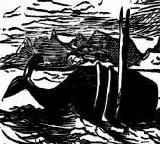
International
Sea-Serpent Reports


Autogyro


Blimp
History repeats:
ISU professor will search for bigfoot using blimp
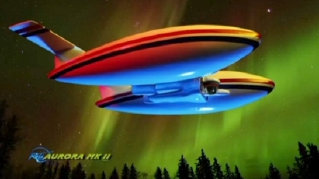
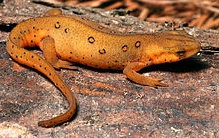

Newt
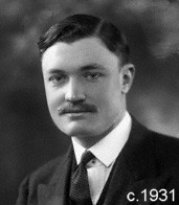
William John St Clair Anstruther-Gray
Baron Kilmany, Bt MC PC
(5 March 1905 – 6 August 1985)

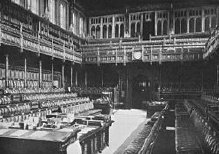

House of Commons
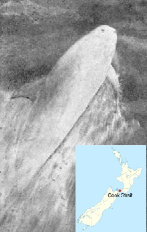

Pelorus Jack
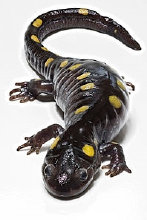

Salamander
The Moha Moha
Coming soon...
LOCH NESS "MONSTER."
Townsville Daily Bulletin (Qld.)
Date: December 11, 1933
Page Number: 7
If the people of the Great Glen are losing their railway, they are getting a certain amount of diversion out of the controversy in the south as to the existence or otherwise of a "monster" in Loch Ness. One party solemnly trailed the Loch the other day with a leg of mutton as ball, and another, with small regard to local feeling, spent last Sunday in keeping watch along the shores of the Loch. Of course, they saw nothing. The keeper of the Natural History Department of the Royal Scottish Museum suggests that the animal seen was probably nothing more than a white whale. How dull !


Royal Scottish Museum
continued
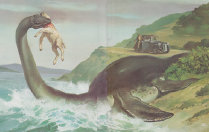
Contents

































